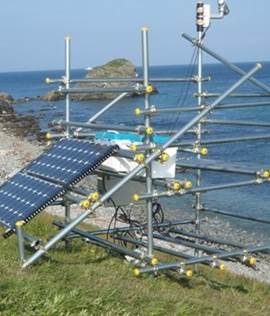Measuring Fluctuations in Marine Debris Deposition
Marine debris is a global problem, and marine debris items are found on beaches all over the world. But how can we tell how much debris washes up on the beach, and when?
How can we measure changes in deposition over time? An option under consideration is to use webcams. Dr. Isobe and his team from Kyushu University in Japan, were selected by the North Pacific Marine Science Organization to investigate marine debris fluctuation - possibly related to the Japan tsunami marine debris - by using a webcam that takes time lapse photos of a beach several times daily, and transmit the photos, via cell phone module and the Internet, to the team, who analyze the photos to identify marine debris.
Drawing on their experience installing nine webcam stations in Japan, Dr. Isobe and Mr. Yufu, a research technician, came to Newport, Oregon, and joined by representatives from Surfriders, the Salmon Drift Creek Watershed Council, and the NOAA Marine Debris Program, visited four sites identified by Surfriders and SDCWC as meeting the required criteria for the webcam. Next, the research team will select one of the four sites, and come back to the US to construct the webcam structure, including the camera itself, solar panel array and battery to operate the webcam, and the electronics to store and transmit photos.
For more information please contact Nir.Barnea@noaa.gov.
Go back to OR&R Weekly Report.

